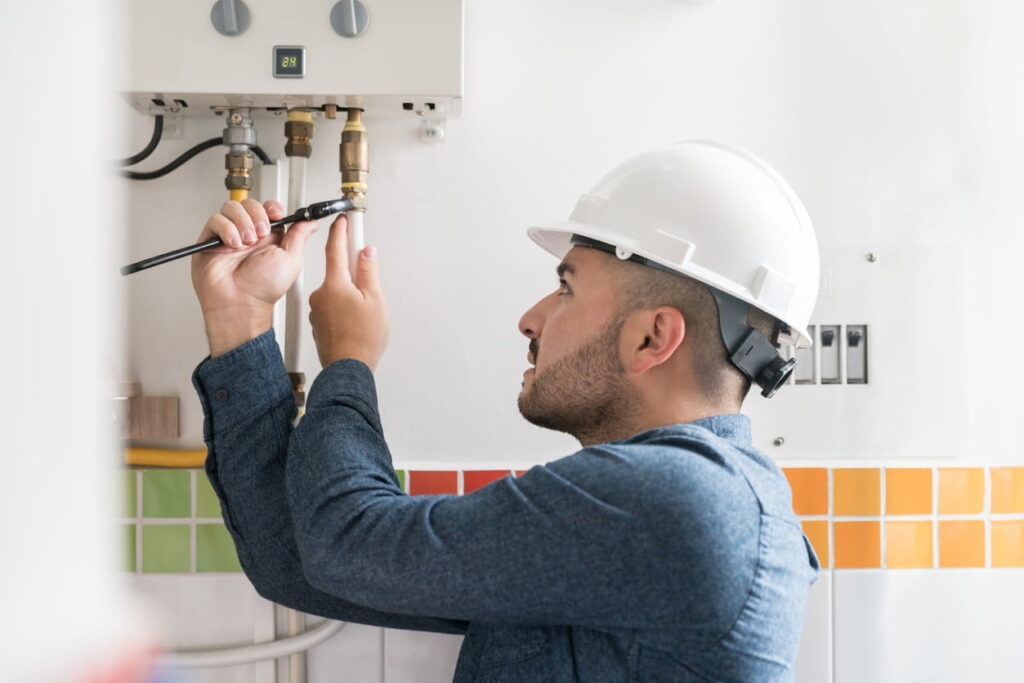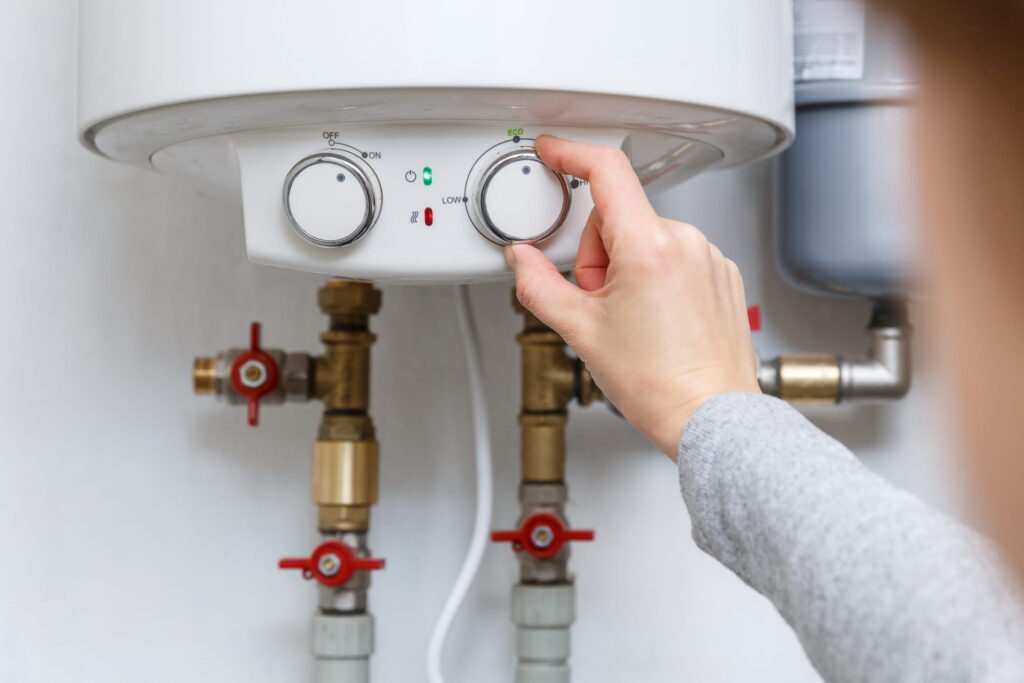Whether your electric water heater is in need of maintenance or well beyond repair, a misbehaving unit can be incredibly stressful. There are a few reasons why replacing your water heater might be necessary. Follow along to learn how to install electric water heaters.
Common Reasons Why You Should Replace Your Electric Water Heater
Before looking into how to install an electric water heater, consider contacting a professional plumber to inspect your current unit. It’s possible that your water heater may not be broken but simply needs a replacement part or maintenance.
The most common reason for replacing your electric water heater is that your heater is not working properly or is no longer functional. If you notice water on the ground or the immediate top surface of your water heater, you will likely have to replace the unit.
Another reason for replacing your electric water heater depends on the hot water usage within your household. If the number of tenants in your home has grown or decreased recently, you will want to consider downsizing or upgrading to a different-sized water heater.
A Step-By-Step Guide to Installing an Electric Water Heater.
How to remove your old water heater
- Turn off your electricity via your circuit breaker. You can use a circuit tester to make sure that your electricity is entirely off before continuing the removal of your old water heater.
- Remove all of the hot water. Turn the nearest sink faucet to hot and run the water until your water is running cold and there is no hot water left.
- Empty all water from the water heater. Open the drain valve on your water heater to drain all the water from the unit.
- Remove the old water heater. Continue by removing the discharge pipe from the temperature and pressure valve. You may reuse the discharge pipe for your new water heater but do not reuse the temperature and pressure valve. Remove your old water heater unit with a hand truck.
Related: How to Install a Tankless Water Heater
How to install your new electric water heater
- Place your new water heater. Now that you have placed your new unit in the proper location, set up a drain pan to prevent the possibility of flooding. For extra reassurance, connect the drain pan pipe to funnel into a drain.
- Connect the temperature and pressure valve. Some new electric water heater units come with the temperature and pressure valve already installed. If it is not, it may be in the box, or you may have to purchase one separately. Remember: Do not reuse the temperature and pressure valve from your old unit; it must be new.
- Connect the discharge pipe to your new water heater. Install the discharge pipe so that it points to a drain. A bucket will work if there is no drain near your water heater.
- Hook up the water to your water heater. You will need a flexible hose kit to complete the water hookup. Be sure to apply plumbers tape to the ends of the heat trap nipples before installing the flexible hose.
- Connect and secure the fittings to your water heater. Some electric water heaters will require fittings made of specific materials. Check your local building codes to ensure you are using the correct fittings. Use plumber’s tape on the connector threads before connecting the fitting to the hose. Put the hose up to the pipe, leave some slack, and cut the pipe to the measured length.
- Install and secure the compression nut. Place the compression nut and ring onto the pipe. Slide the pipe into the opening and twist the compression nut until it is secure.
- Install optional seismic straps. Depending on where you live, seismic straps may need to be installed to prevent earthquake damage. You can skip this step if you are not in an earthquake-prone area.
- Fill your water tank. Locate and remove the aerator from the closest faucet and turn the hot water valve. Next, slowly begin to turn on your water supply. Make sure to check connections around your water heater. If there are leaks, turn off the water supply and tighten the connections. If there are no leaks, continue to fill the water tank.
- Remove potential air and debris from your water tank. When the tank is full, water will come out of the faucet. Let the faucet run through water for at least three minutes to remove any trapped air or debris in your water tank.
- Securely connect your water heater wiring. Locate the ground wire by removing your water heater’s junction box cover and attach it to the green ground screw by twisting the two wires together.
- Turn your electricity back on. After replacing the junction box cover, return to your circuit to turn your electricity back on. Check your electric water heater to ensure that it has power. If the water heater does not have power, turn your electricity off and check the connection of the wiring.
- Set the water temperature on your water heater. You will want to set your water heater’s temperature to 120 degrees Fahrenheit. Follow the manufacturer’s instructions if you are unsure of the temperature. Be patient, as the water in your tank could take multiple hours to heat up to the specified temperature.
- Monitor your water heater’s discharge pipe. After your water heater has been running for a few hours, check the discharge pipe. If the pipe is leaking, your water pressure is too high. Lowering the pressure should result in the stopping of a leaking discharge pipe.
- Check for excess air between your unit and the faucet. If the water stops flowing from your faucet, remove the aerator as you did during installation. Keep the faucet running for a few minutes to let any excess air or debris escape. Reconnect the aerator and recheck the faucet. If your water heater is running smoothly, you have successfully installed your new electric water heater.
Benefits of Hiring a Local Plumber
While it is always possible to successfully buy and install your electric water heater replacement, there are reasons for hiring a professional plumber to install your new water heater. The benefits of hiring a local plumber are:
- Saving you time by installing your water heater quickly and efficiently.
- Lessen the risk of flooding or excess damage to your home.
Whether you bravely follow this guide to installing your new electric water heater on your own or leave it up to a professional, there’s no debating that a faulty or broken water heater creates a stressful situation. Luckily, there are options to get your new water heater up and running in no time. Following these steps or calling a professional will ensure that the frustration of having no hot water will soon be a distant memory.



